As with any surgical procedure, there is a recovery period after liposuction. The length and painfulness of this recovery period are dependent on several factors, the most important being the size of the procedure itself. In this article, we will expand upon what affects liposuction recovery time, what this recovery involves, and some of the best recovery tips to remember.
What to Expect from Liposuction Recovery
Liposuction is generally mild, faster to heal, and less painful than invasive surgical procedures. Typically, any liposuction patient will be able to return to their normal activities after one month. Smaller procedures may take even less time. However, some of the residual effects of liposuction can go on for months.
The worst days of liposuction recovery will be the first few after the procedure. Most patients will experience pain, soreness, and bruising, but most pain can be controlled with over-the-counter or prescription pain medications. Your doctor may prescribe antibiotics to stave off infection, too.
Recovery Right After Liposuction
The day of the surgery, your surgeon will provide you with compression garments for your procedure areas. These compression garments serve two purposes: they help to keep fluid from accumulating in the procedure area, and they assist in creating the new shape that your body will be taking.
Most patients will be kept under watch for the first hour after their liposuction procedure. This is primarily to watch for complications, such as:
- Structural damage inside the body
- Kidney and heart problems
- Bleeding or fluid accumulation
- Fat emboli
- Internal punctures
- Lidocaine toxicity or difficulties with anesthesia
- Nausea or dizziness
- Low blood pressure and oxygen levels
After the hour-long watch is up, patients are sent home to recover. Patients should watch for fluid drainage from their incision areas for the first few days. It’s advised that you keep towels handy for this until your incision wounds close. You should wear loose clothing if your liposuction procedure was done anywhere that clothing would cover.
Recovery One Week After Liposuction
During the first week after the procedure, patients will need to be especially careful of their wounds. Most patients will feel some degree of pain or tingling in treated areas. Some patients may experience a loss of sensation in treated areas due to nerve damage, but this should resolve itself on its own over time.
For the first week, patients must be especially careful with their activity level. While most patients are urged to rest, drink plenty of fluids, and avoid stressing their procedure areas, patients should also be sure to get up and walk every two hours or so. This helps to prevent blood clots from forming.
Any compression garments given to you by your doctor should be worn for several days without bathing, as per your doctor’s instructions. After five days, most patients will come in for a follow-up visit to make sure everything is proceeding smoothly. As long as everything is healing as planned, patients can remove their compression clothing and bathe starting after this visit.
After one week, patients are permitted to return to light exercise, and some will also be cleared to return to work.
Recovery One Month After Liposuction
After one month, most liposuction patients can return to their normal lives. Most liposuction patients can return to work after two weeks have passed, and after three weeks, most patients should be able to return to a mostly-normal routine. While targeted exercise around operative regions may still need to be avoided for a while longer, most exercise is safe to do after four weeks.
During the fourth and fifth week after the liposuction procedure, patients can transition to wearing their compression garments for less time. Most patients should be done with their compression clothing after six weeks.
Recovery Six Months After Liposuction
After six months, patients should be fully healed from their liposuction procedure. However, the swelling resulting from liposuction can last from six months to one year. At the six month mark, some patients with smaller procedure areas may be seeing a decline in their swelling, but patients with larger procedure areas may need to wait longer to see their full results.
Recovery One Year After Liposuction
After one year, all patients should be fully healed, and most patients’ swelling should be gone or starting to decline. Any scars left from liposuction incisions should also be partially or mostly faded. At this point, patients should be able to fully enjoy the results of their procedure, and the body’s healing process is completely done.
What Is the Fastest Way to Recover from Liposuction?
The proper (and fastest) way to recover from liposuction is to follow the recommendations of your doctor. The doctor who did your procedure is experienced and knowledgeable, and they will be able to give you a personalized plan to follow to promote optimal healing of your body. However, as a general rule, patients should always do the following:
- Do not forget to wear your compression clothing, and wear it as often and for as long as your doctor recommends.
- Take it easy during the first week after your procedure. Drink plenty of fluids and let your body rest as if you were recovering from any other operation or sickness.
- Take care not to stress incision areas and procedure areas during the healing process.
- Do not go back for additional procedures until your swelling has completely faded unless your doctor recommends otherwise. Until six to twelve months have passed, you will not be able to get a clear look at the final results of your treatment!
- Before your procedure, talk to your doctor about treatment add-ons or other remedies that may help expedite your healing process.
Liposuction Recovery Tips
There are various things that you should know and expect when going into a liposuction procedure. In this section, we will answer some questions that you may have about the recovery process, and we will give you the best tips to help expedite this process and make it as painless as possible.
Will My Fat Come Back?
With a correctly done liposuction procedure, the fat that’s removed will not grow back. When fat cells are removed from your body, they’re gone forever! However, the fat cells that are left there can grow in response to poor diet and exercise, which can result in the same visual effect as growing them back.
Your doctor cannot remove all of the fat cells in one area of your body. Not only would this give a very wrinkly, sagging appearance to your skin, but it would be extremely unhealthy for your body. A certain amount of fat is necessary to make the end result of your procedure look attractive, even, and smooth.
As long as you maintain the same general weight that you had before your procedure, the fat that was removed will never make a re-appearance. However, do keep in mind that liposuction is not a weight-loss procedure. While up to ten pounds of fat can be removed during the procedure itself, liposuction is only recommended for people that are close to or at their target weight already.
Will Liposuction Give Me Scars?
Because of the nature of liposuction, there will be some small scars that are left behind from the incisions that your doctor creates. However, these scars will fade with time, and doctors take special care to hide these incisions in places that are not easy to see.
For arm and breast liposuction, for example, doctors commonly hide scars in the armpits, and for cheek and chin liposuction, doctors have the option of creating their incisions inside the mouth to keep them out of sight.
If you’re not satisfied with the appearance of your liposuction scars, any scar treatment on the market should be sufficient in reducing their appearance further. Some examples of this include:
- Stretch mark or scar cream
- Laser scar removal
- Scar removal surgery
It’s essential to allow for careful, healthy healing of your liposuction incisions, or you may end up making them appear worse. A wound that repeatedly opens and closes will leave a much more noticeable scar than one that successfully heals the first time.
How Much Fat Will My Doctor Remove?
Your doctor may or may not be able to give you a general idea of how much fat they will remove before they begin your procedure. Logically, the larger your procedure area is, the more fat will be removed, but it’s mostly up to the aesthetic choices of you and your doctor.
Once the doctor has removed enough fat that your body presents the shape you’re looking for, they will stop. This could end up being above, below, or right on their estimate depending on their experience level.
The more fat your doctor removes, the more recovery you are in for, so it’s actually in your best interest to have less fat removed. Smaller areas, like the face, tend to be quick, easy, and faster to recover from, while large areas like the legs and stomach require a longer recovery and tend to be more painful.

